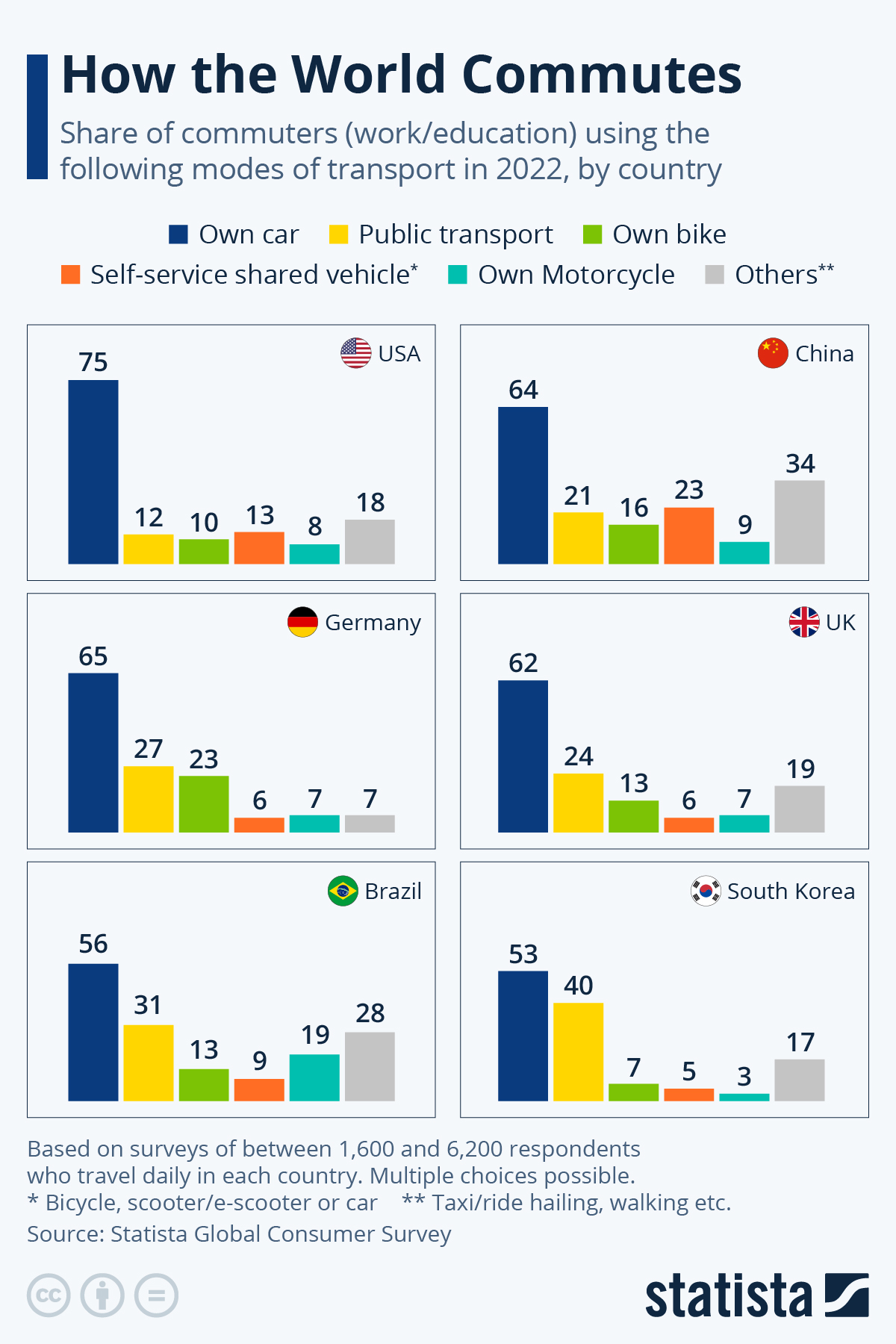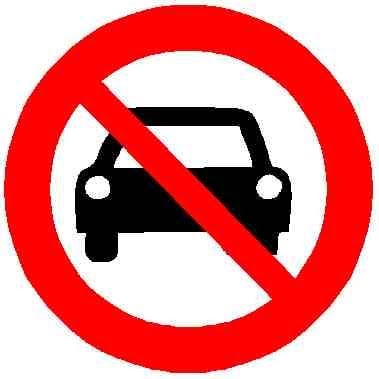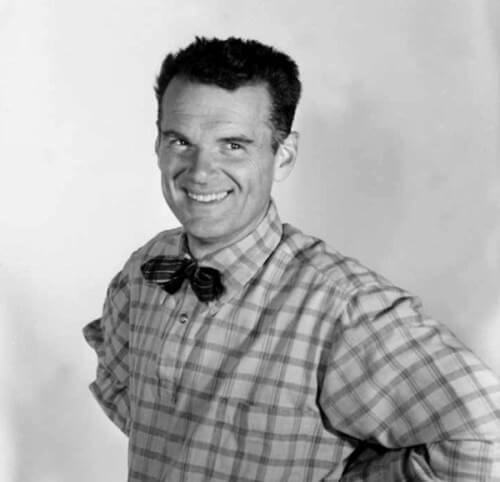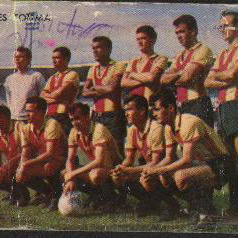Wait what? Don’t people use the train in NY?
Nobody drives in New York, too much traffic
Channeling Yogi Bera?
NYC, yes. That’s the yellow on the map.
Syracuse, no.
Aww shit it’s tiny af
See there are some problems here.
I can’t get to my doctor, or dentist, or grocery store, or pharmacy, or bowling alley, or friend’s house, or closest pond, or my parents, or the airport without driving to each of those places.
The only way this gets solved is if there is a huge network of buses going to every neighborhood at tight intervals then each business Park and public attraction, etc at tight intervals. In a town of what 150k-200k?
Outside of metro areas, this doesn’t work. At all.
This is because a lot of well-built towns (or cities) have been bulldozed and rebuilt for cars instead of people. Or some built directly with only cars in mind (I wonder if car and oil companies had a role in this…, they did). This is why one of the key points (maybe the first step and the most important one) is to allow, invest in and develop better urban areas: allow two or more stories buildings, so not only areas are denser, thus it makes sense to serve them with transit, but also your doctor is allowed to have their office there; so your dentist; so are stores and pharmacies (that can only thrive in an environment where people live, not a suburban sprawl of cars and megastores). Cities built like this always have fast and efficient transit to the airports, to recreational areas (parks and your pond) and most likely to your parents.
Banning cars where you are FORCED to use a car to do anything doesn’t make sense. Building fake “bike-lanes” that lead to nowhere in zero-density areas with no point of interest (a store, your doctor, a station…) also doesn’t make sense.
What you can and should do is advocate for the abolishment of outdated zoning laws and the proposal of new transit projects. Change in those areas takes the most because it’s like starting to cultivate strawberries on a desert.
Buses can go all of those places. A system of regional light rails in buses would probably work. Urban sprawl makes it difficult.
It can work well though. My city of about 60k is a great example.
- As a city built out hundreds of years ago, it’s more centralized than most American cities, with a town square, offices, library, post office, etc in a tight walking radius.
- As a bedroom community of a major city, we have a couple train stations.
- As a city dedicated to quality of life and transit oriented growth, we grew the train station into a transit hub for buses, cycling, taxi, ride share, rail trail and micro mobility. It’s all surrounded by higher density housing - bigger apartment and condo complexes than elsewhere
- As a city watching its business interests, that walkable town center is a center of shops and restaurants from many culture
As someone in a neighborhood of single family homes, I have frequent buses stopping at my corner. However I frequently walk to the town center, to see a movie, enjoy a restaurant, etc.
Yes, transit can work well in medium and even small towns, depending non how they’re set up and run
What about Mackinac Island?
It’s funny that it’s both visible and wrong
Honest question. Does everyone in this instance live in a major city?
Not everyone, but most people live in major cities. And any city that is big enough to “justify” building stroads is absolutely big enough to justify having walkable communities connected by light rail or bus
81% of people in America do.
I don’t, if that question really is honest. (But also not in the US)
But you really shouldn’t be surprised, most people live in major cities.
Which instance?
If there’s more than one, I’m going to server transfer…
Please God, I want to wake up in a walkable sustainable world without car dependency and without capitalism
NYC here. Don’t think I’d want to live anywhere else, at least not in the US.
im not and i don’t want to, but i support the vision.
All but two of my ADULT family members in New York City drive. Even though they have access to the best public transit in the country and finding a parking spot can be a chore. The rest of us (as in Americans outside of The Big Apple) are required to drive.
Most people live in cities.
A large majority of the United States lives in a city or urban center.
It’s not only major cities that ought to have good public transportation. Basically everything except small villages and rural communities would have all that in a sane world.
But yes, over 80% of the population of most developed countries live in a city.
I remember going to a job interview when I was younger. My dad dropped me off there on his way to work and then I took the bus home after my interview was done. It took my dad about 13 minutes to drive me to the interview and it took me TWO AND A HALF hours to take transit home. That includes bus travel time as well as time spent waiting for buses. I have also biked that route before and it takes about 25-30 minutes one-way.
The North American approach (because Canada is guilty too) to transit is to just throw a bunch of busses at the problem and act like they’ve “solved traffic”. Meanwhile those buses are noisy, stinky, often unsafe things which spend most of their time stuck in traffic and are almost always late, if they even arrive at all. Most of the bus routes in my city stop at midnight so if you were out at the bar for the night and needed a way to get home then you better have funds for a cab or Uber or you’re going to be stranded. (something something car-centric cities encourage drunk driving deaths somethingsomething)
Depending on the distance you need to travel - it’s often faster to just walk. That’s right, we have created a method of transportation that is actually slower than walking. And all the while our city planners, officials, and politicians pat themselves on the back for their “commitments to public transit”.
And don’t even get me started on how the war on unhoused people has lead to almost all bus stops being uncovered and with no seating. Raining? Fuck you! Snowing? Fuck you! 35c+ outside? Fuck you! Disabilities? Fuck you! What few covered stops I have seen usually have glass roofs so the sun still cooks you under them.
Maybe more people would use this method of transportation if it literally wasn’t intentionally made to be as miserable and useless as possible.
@TheFeatureCreature @PugJesus Indeed that sounds like it could use some reform.
The North American approach (because Canada is guilty too) to transit is to just throw a bunch of busses at the problem and act like they’ve “solved traffic”.
Nobody thinks they’re “solving traffic”. In most of North America, buses are seen as transportation for poor people. Cities feel like they need to supply them because poor people need to get to their jobs, but it doesn’t have to be a good solution.
In Switzerland where they actually do try to solve traffic with buses, those buses have their own dedicated lanes, their own stop lights, etc. Plenty of rich people still drive because it’s a status symbol or something, but buses, trams and trains are the fastest way to get from A to B. Cars are forced to yield to bus traffic. The result is that buses are fast and predictable, so everybody’s happy to use them, which means they get increased investment, which leads to even better bus service, so even more people use them, etc.
My entire company of 150 people here in Switzerland in Zürich has 11 parking spaces, one is reserved for the CEO, who doesn’t even use it often, three are rented by other C-suite members, five are for visitors or the occasional internal reservation, and two hold our bike racks.
But you really have to be masocistic to even want to drive in Zürich during the commuting times. Right in front of our office there is an train station for a local train line right under the river, and on the side of our block there is a tram station. Or you can walk to the main station in 10 minutes. I usually bike home though, it’s half an hour and at least somewhat counteracts my sedentary lifestyle.
But you really have to be masocistic to even want to drive in Zürich during the commuting times.
Yeah, and if you do, you’re going to be passed by buses, bikers, even pedestrians. I just love that Zurich buses pick up some passengers, go into their bus lanes, pass all the cars, then get their own light. Meanwhile the Mercedes is sitting at the red light just waiting.
I remember riding a bus downtown for the first time. A guy sneezing and wiping his nose helped me understand what bus I need to use. I’m grateful for his help but he sure did smell like bologna.
I very seriously tried to be a no car household, I got to one car and I just walked a mile to work, rain or shine.
But my wife was a 6 minute drive from work, but due to criscrossing highways it was entirely unwalkable and like a 40 minute bus ride.
40 minutes you say well clearly you tried very seriously
Nah im with them, thats 34 minutes of extra sleep
Not too far from me there’s a family with three kids in the school literally across the street from their house. They take the bus to school. Literally directly across the street.
Why? Some kid got killed there back in the 1980s. And instead of making it safe for children to walk to school they have them take the bus to cross the street.
Why? Because that street is a state route, and doing anything to calm traffic is anathema to it being a “highway.”
We live across the street plus a little bit from our kid’s elementary school. We don’t even get the option to use the bus. Either we pick up and drop off every day or he walks on his own. And he’s still little so realistically it’s we drive him or walk him.
But at the crossing for the main street the school is on, there’s a police officer serving as crossing guard every single day at start & end of day. So maybe our district took the sensible approach?
We have an awful 5 lane road in town with school bus stops all along it. The limit is 60 km/h but the average speed is about 85. There is 1 speed camera right where the 60 zone begins and ive NEVER seen a real cop doing radar on the road. There are many signs asking people to slow down and stop for the bus but no real effort has been made. One kid did die and we just plaster his face all over town yet still just accept that everyone is doing 25+ over the limit.
There are multiple solutions including using more speed cameras, running more radar enforcement in the area, redesigning the road, moving the bus stops to side streets that are safer to stop and cross on, but absolutely non of these have been tried or implemented. Hell the existing speed camera is vandalized so often I’d bet it costs more than in generates in tickets, people have thrown it in the lake multiple times (yet the city still insists on keeping the mailbox style instead of a pole mounted camera).
I’m in a similar boat. 45m drive by car. 2h using PT. Including a 30 minute walk for the last bit to my office. This doesn’t include waiting for busses or trains.
Realistically it’d be 2.5h without delays. And that’s just one way. After that I’m expected to work for 8h and do it again.
So if i leave at 7am, +5h+8h +30minute lunch break I’d be home by …8.30pm?
And that is hoping the connections line up after work… Cycling isn’t really an option as there’s no shower in the workplace. And knowing corps I’m pretty sure they won’t appreciate people charging their electric bike battery in the office for free.
RIP work-life balance using PT. And I already feel like it’s shit.
Though I do try to use the train when I can. Even though it ain’t cheap either…
I am so sorry. Here in the Netherlands it’s not super great, but I’m ashamed if I’d complain now. A one way trip takes me an hour by car, by train it takes only half an hour extra. The train on my line usually gets more than half an hour delay only once every two months or so. The car gets half an hour delay twice per day. Train delays mean I get to read more books. Car delays mean I get to stare at more brake lights and build up more anger and stress.
Best way I can think of to promote carpooling is kind of what colruyt tried.
Employee bus that goes down the main highway ( Belgium ). It has WiFi and you csn keep working on your way home. Every minute worked counts.
You’ll just need a bigger carpark by the highway. 30 minutes delay? It’s not lost time. Still want to use your car? Sure. But you’ll work longer and have to drive home afterwards.
I am not a traffic expert. The approach might be flawed. But it seems like a step in the right direction.
At least it’s better than complaining about overcrowded busses and trains who are delayed again. And while it might not solve the issue, If you can get a 10 people per bus. It should start adding up eventually. The incentive to take public transport doesn’t disappear with the disappearance of traffic jams. Its an alternative to sitting longer in the office and being home later.
I think colruyt did something like this for a while? https://reset.vlaanderen/2017/09/01/kantoorbus/
Maybe its something you can book a seat on and should be scheduled on a larger scale than just 1 company.
One can dream I suppose. Hell will freeze over when most companies will “trust” their employees enough to work on the bus though.
Also trains are slow and it takes the same time as a bus/car and costs the price of an airline ticket. This is comparing Detroit to New York via bus, train and airplane.
The Amtrak long distance lines are a disgrace, kept barely alive. I had a similar experience where my girlfriend at the time wanted to visit me from Albany to Boston but the train took an hour longer than greyhound. I’m not sure we should even count them as a transportation choice.
Amtrak does run some lines where they can afford to upgrade them to “useful”, notably Acela. Travelling from Boston to NYC is fastest and most convenient by train, although weirdly enough flying might be the cheapest option if you include parking costs for the car option
Trump has some plane to privatize and sell off national parks doesn’t he?
I’m all for a significant reduction in vehicles commonly on the road. Apart from a monumental restructuring of the entirety of every major infrastructure in the United States, how would we go about effectively reducing the number of cars that are daily drivers?
Make public transit a viable alternative.
My commute is 45 minutes by car, over 2 hours by public transit. We need massive investment into public transportation. More buses, more trains.
And, I’ll get crucified by this I’m sure, but it’s true: bicycle infrastructure is nice but a far far secondary goal. When we prioritize cycling over buses and trains, all we’re doing is supporting upper middle class office workers and work-from-home recreational cyclists. It’s not a sea change. It doesn’t move the needle. Taking away a car lane to make a dedicated bus lane moves the needle. Taking away a car lane to make a bike lane does not, unless mass transit is already a viable option.
I can agree with this. If we moved to public transit through the utilization of railways and bus routes, would you say the cost of maintenance then moved to the Local and State governing bodies? One might conclude that roadwork costs would decrease positively with the reduction in traffic. There would also be higher maintenance costs, all offset by taxes.
What about the logistics of these operations?
The initial start-up costs?
The time?
The petty small suburban neighborhoods who claim buses increase homeless presence in their neighborhoods?
There would also need to be a fundamental cultural shift on the Professional level.
I know we don’t really have all the answers. I just want to make sure we are aware that moving this needle is more than dropping a couple magic bus lines down in each major city, and running a railroad from Point A to B. We do need less cars. I wish I could walk to work. All of this requires an almost mind-boggling amount of preparation and then work to even get started.
Gotta be realistic, otherwise we’ll never get anywhere.
But, like, I already have a car for my daily commute and whatnot. I can’t see a way that a bus or similar would be faster. So why would I even consider using public transport?
Busses/trams can hit 0 red lights and not get stuck in traffic if they have their own lanes and transit priority signals
But what if your specific commute isn’t that congested and traffic is only a minor inconvenience?
Moreover, how do those things cover the other benefits of cars?
Direct line from home to office that runs on my schedule and can change route at any time I choose.
The ability to run a little late without missing the ride all together.
I don’t have to share it with strangers.
I have significantly more space for transporting things.
There’s no interconnecting travel. It’s just front door to car, car to front door.
It doubles as a mobile locker, shelter, bench, and lunchroom. All private.
And I don’t say all that to downplay the need for public transit, just that if the goal is to get more people on it, you’re not going to convince them to give up their cars only to avoid traffic.
Genuinely, I’d rather sit in my car in traffic than lose all the other benefits of it with public transit.
One of the reasons I loved taking the train to work (yay, Portland MAX!) was that I didn’t have to do the work to drive. I got on the train, snagged a seat (or stood on really busy days) and mentally punched out for 20 minutes. I could read a book, zone out, or make some notes on my thoughts.
At the end of the route, I’d hop off, walk two blocks and I was at a work. Reverse it to go home. It was a dream commute.
Driving Hwy 26 would have taken longer, and the sheer stress it caused was horrible. Always having to watch for someone deciding to dart lanes, merge badly, slow to a stop, shimmy forward, wait for a person to merge into the crawl. Commuting by car on any kind of busy road is horrible for your health.
Driving Hwy 26 would have taken longer
That’s valid for your area but it’s very circumstantial.
Commuting by car on any kind of busy road is horrible for your health.
I guess for some, but I’ve been driving in this kind of traffic for a decade, it doesn’t phase me.
snagged a seat (or stood on really busy days)
Personally I’d rather sit comfortably in my driver’s chair for 40 minutes, listening to podcast or something in the privacy of my car, than stand in a crowded train for 20 minutes.
But a bus will also be stopping at other places that are not my destination.
True, but you’d probably be surprised at how often you’re actually stopped or going very slowly because of traffic when driving, especially in cities. If you compare the driving and transit times between most subway stops on Google Maps, the subway (closest thing to signal priority on a bus in most places) is almost always quicker
In a city sure, but I reckon most car drivers are in suburban / rural areas.
Fully rural driving is absolutely going to be faster than any attempt at transit can be. But most suburbs were built so people could live there and drive into the nearest city for work, so even if the driver lives in a suburban area, the longest part of their drive will almost certainly be the city bit. So I would argue for both cities and suburbs, transit can be faster than diving if done well.
It doesn’t have to be faster, just on a similar level. With a bus you don’t have to worry about parking or other bad drivers, you can read a book or watch a show or get started on the day’s work. That’s worth a few extra minutes of travel time.
You are only looking at it from your own perspective. There are plenty of people who hate driving and would rather sit on a train and read a book. If all these people would get off the road because they take public transit then there would be less people on the road. So you wouldn’t be stuck in traffic as often. Also people who don’t own a car or can’t drive need to get to places as well. A society should provide good transport for these people as well.
God if I wouldn’t kill to just be able to take a train like in Tokyo. The train times were usually 2 to 3 minutes apart from driving times on Google maps. Add the 10-15 minutes it’ll take you to walk out of your station to your job and I’m all for It. I need the extra walking anyways to stretch my legs.
When we prioritize cycling over buses and trains, all we’re doing is supporting upper middle class office workers and work-from-home recreational cyclists.
And the young, and the able.
Tell a 40 year old single mother that she needs to bike home.
…do your legs fall off once you’ve given birth or why is being a mother a factor?
Also, I’m pretty sure most 40 year olds are still able to bike perfectly fine. That’s the stereotypical age range for picking up jogging, right?
But they’re right, the priority is having a working tram/bus network, and having safe lanes for (e-)bikes as an extension of that system.
Picking up kids and doing errands with kids makes bicycling that much harder.
Nah, it’s true. My walk to work is only possible because my oldest drops her sibling off at their school on the way to her school. If I had to make that loop it gets a lot more complicated, and even so it’s the least complicated it’s been since I had kids. There is a city bus to both schools, but the one that goes by the high school runs once an hour, the one to the college twice an hour but takes 2 hours, vs 15 minute drive. High school is an hour walk, not impossible and sometimes faster than waiting for the bus to arrive, but pretty bad with backpack and musical instrument, school bus system takes 1.5 hours.
The only reasonable answer here is car, until/unless the buses run on a reasonable frequency.
When we prioritize cycling over buses and trains, all we’re doing is supporting upper middle class office workers and work-from-home recreational cyclists.
Eh? How?
The people that can actually bike around on the regular or aren’t already physically exhausted at the end of their work day.
The people that bike do it by choice because they can and they want to. Pushing more bikes in place of trains or buses would hurt the people who can’t.
Making public transport not absolute dogshit.
Like, I don’t even mean “We need to extend it way out into the boonies” kind of thing. Something as simple as “Public transport that isn’t so dogshit that the locals in major cities avoid it like the plague whenever possible” would go a long way towards reducing traffic congestion and car usage, even with suburbs and rural areas continuing to use cars excessively.
Every major US city should have a dense, high frequency grid of trams/subways within 3 miles of the city center. Then, a larger network of light rail/subways out another 3 miles for commuting and events traffic.
3-5 minute intervals is good enough, anything less frequent is meh. Over 15 is a joke.
I think my closest bus stop is over 90 minutes between stops
The buses that run (surprisingly direct routes) to my kids’ workplaces and the one that runs by the youngest’s school here run ONCE per HOUR. I would be thrilled to have service every 15 minutes. They used to run every 15 and it worked for me when I was their age, so it’s gotten worse here not better, even as the population has doubled.
I grew up with public transport and now drive the car daily. Car is so much more convenient.
I don’t understand what’s all the fuss is about. Like it’s impossible to haul a lot of groceries in the bus and u have to wait in the cold for the bus to come. And sometimes there are a lot of people and u are like sardines there.
Cars don’t scale.
As soon as there is real traffic, cars become inefficient trains.
If you’re somewhere that doesn’t have much traffic yet, it’ll seem fine, but that doesn’t always last.
If you can make a bicycle work, that’s much healthier and cheaper to own and operate for all those people that can’t afford a car, or don’t want to be indentured to it. Cargo bikes even work fine for groceries, depending on your family size.
It has a bad reputation cause it isn’t well funded, I do agree buses aren’t perfect but in my city they come often enough and there is actually plenty of space to rest so it is not a traumatic experience
Besides the fact that underground trains take care of most transportation
Driving these days is just being stuck in traffic for an hour at a time then wasting 20 minutes searching for a parking spot and being late for work.
You should move. I live in a rural area and I don’t know wtf would I do without vehicle
Most people can’t afford to move.
Yes vehicle important
It’s not “I want public transportation because public transportation is fun”, it’s “I want good public transportation because it’s better for the environment and society and urban planning and etc etc etc”
It’s not “I want public transportation because public transportation is fun”,
Public transportation is kinda fun though. It’s great to relax and read a book or social media instead of staring at the backs of cars and cursing.
I love trains, personally, but I despise buses and subways. Trains are so peaceful. I could ride on a train all day.
Walkable cities are even better. I used to drive daily and then I moved close enough to walk to work with conveniently located grocery stores. Didn’t drive much at all for years and THAT was convenient. Never sit in traffic and just stop in the store and pick up a few things on your way home from work. As long as I have to be working that is as close to livin’ the dream as possible for me.
Car is so much more convenient.
(Okay before you read this, this assumption is for Cities only. Rural areas do not apply at all lol. Suburbs are also still part of cities)
This is actually an effect of creating a car centric infrastructure and city planning revolving around roads and parking.
You have to imagine for a moment what an entire city would look like without cars as the core transportation method. For starters, suburbs wouldn’t be a thing, everything would be spaced about 4-8x closer, large supermarkets would be rare, especially grocery stores, pedestrian and cyclist traffic would be the most common form of transportation, and then busses/streetcars, and then trains.
You would likely be getting groceries more frequently, but it would be an average 7 minute walk to your local grocery store, and a flat 3 minute cycle if you don’t want to carry any groceries and put in even less effort than walking. Busses and trains would be reserved for mostly commercial traffic like traveling to work, city center, or other neighborhoods.
There are plenty of real life examples of cities and entire countries that are developed like this. Netherlands is always brought up, but places like Sydney follow this planning despite also having a lot of cars. Even several US cities were like this in the early 1900-1940s.
The reason busses and trains absolutely suck in the USA, is that it is treated as secondary transport. Busses are rarely running with enough frequency to make them viable, and they have to travel the same distance and use the same roads as cars, because every neighborhood was designed to accommodate cars first. There should be almost no need to get on a Bus to do grocery shopping.
Same logic applies to trains. Lots of people drive first to take the train, which makes it much less effective. Also the USA hasn’t properly invested into rail for like 70 years, so every system you see is slow as hell and never on time.
You’re the first person I’ve seen on the various fuck cars communities I see to actually acknowledge rural areas exist, good job. We can’t all just walk everywhere.
Yeah one of the reasons I brought up Sydney is because there’s an entire massive rural area of Australia with people living in practically the middle of nowhere.
Which is why they have their infamous truck trains that drive for days just to transport supplies around.
But when you hit the city, the landscape instantly changes. It’s almost cool going from seeing outback trucks to JDM wrx and evos everywhere, lol. I assume it’s because only gear heads and enthusiasts keep cars around because they have metro, busses, and a water ferry that takes you around.
The US needs so, so, so much reform. Especially regarding public transit. In most parts of the nation anything that isn’t a car stuck in traffic is for poor people who are also disregarded across volumes of needs issues.
We’re falling back to where we were in the great depression, and it still seems nothing short of violence and bloodshed will stop our ownership class from exploiting the rest of us.
Even in those cities with it, public transportation is failing. The systems are archaic and outdated.
I’m guessing those red areas in Alaska are literally only because there are no roads.
And the blue area is definitely “commute by boat”, btw.
I was thinking snowmobile
Or people
false, it’s more accurate to say Suburbs don’t really exist in Alaska. Primarily because it still hasn’t really filled up the “urb” layer.
That, or those people live in the place they work, or else only a few minutes away.
I think you nailed it. The majority of the northern portion of alaska is going to be oil/gas workers, lumberjacks, and perhaps researchers and native tribes. All of those probably have company barracks, cabins, or if there is a ‘town’ it’s going to be a few hundred yards wide. For the towns, it’s due to the winter, when you almost need to be close to other people in case something goes wrong, because significant help is a long way away in distance and time.
I’m surprised the Chicago area isn’t orange/red…
Are there similar maps available for other countries? Would be really intereseting to see

(source)
Not a map, but at least some more data from some other countries. The own car is unfortunately the most used mode of transport for commuting in every surveyed country, but the US seem to be especially far behind when it comes to alternatives.
I think this source hasn’t sampled their data very well. The figures for china seem wildly wrong.
The figures from the same source even list the number of automobiles in China as 319 million in 2022, no where even close to 64% of the population.
The 64% commuting with own car in China is way off. So I’d question the entire chart.
They mixed taxi and ride sharing with walking in that statistic. For the purposes of car usage, it’s not really helpful.
Moreover, difference in land mass and population density matters when looking at this from a national perspective. United States has significantly more rural space than Germany. The map posted is kind of pointless because it’s only showing the most used form of transportation in each county, and that will always be cars with extreme outliers like New York City, no matter how much we invest in public transportation.
What they’re using is Bumblefunk County Oklahoma to get from their little town of 2,000 people to the factory 20 minutes away in some industrial park between Nowheresville and Chickentowm isn’t really relevant to the discussion. Public transportation is only really viable in dense areas, but everyone else in the country is going to still drive because they’ve got distance to cover or irregular routes. Even if we expanded rail across the country, people in those counties would still need to drive to the station.
I agree that both the map and the statistic I’ve posted don’t take those country-specific characteristics into account.
I’m not sure how important that difference really is, though, as both the US and Germany seem to have pretty similar degrees of urbanization (US: 83.3%; Germany: 77.8%; source). So the rural population isn’t really that big in either country, relatively speaking.
I’m not trying to say that the rural population isn’t a factor, I’m just not sure how big that factor really is.
The wording on that one makes me wonder. It says “own a car,” but I’m sure there are millions of people who own a car but don’t necessarily use it daily for work. Isn’t it fairly common in major cities to own a car and still take a train/bus to work because of traffic, using the car for things like weekend trips or errands? Idk if that’s enough to really swing of the stats, just that I wish they had phrased it differently.
Read it again ,including the title, it says own car, not own a car, which means that they use it to commute. That said, it’s worded a bit poorly
It’s “own car”, as in, not a ride share or taxi cab. They get to work in their own cars.
It says “own car”, not " own a car" (?)
It doesn’t say “own a car”, it says “own car”. As in, “How do you get to work?” “By my own car.”
It’s not surprising when we’ve created an induced demand for driving through which infrastructure we build and subsidize. However, the numbers in Germany and China are changing as they push for non car-centric infrastructure. I can’t speak to the other countries.
Places like Copenhagen and Amsterdam used to be full of roads and parking lots. When they built public transit and safe bike infrastructure for shorter trips, they induced a demand and people ditched their cars for safer, cheaper, and more convenient alternatives.
I think this map would really benefit if the colors would be slightly adapted to show the percentage. In some regions, 50% commute by car, in other regions maybe 90% - and both are green.
It really highlights the fact that most of us (also in europe) depend on our cars to make a living.
Outside the US there are very few major cities that don’t depend on public transport, because it is the most efficient way to move millions of people around a city. Ultimately it depends on the quality of public transport.
Reform alone will not be enough. It needs a new revolution.
This is why we Americans may be happy to hang out and chat on /c/fuckcars, and try to vote for sane transportation policies, but then also be like lol no I can’t actually get rid of my car.
Every big American city you’ve ever heard of is solid “car” except for the heart of New York. Now just imagine what it’s like for the folks in rural areas or even in the suburbs of medium cities.
This is a pretty sparsely populated country on average, and it’s all designed assuming everybody is in a car. Sidewalks and bike lanes get sprinkled around where there’s room and desire for them.
Actually many European cities would be green as well. For example Munich still has a modal share of 34% cars. However none of the other options has more then that with walking and public transport being at 24% each and cycling at 18%. You could very much live without a car though.
USA should play a bit of OpenTTD or other public transit simulators on their country map to get some ideas ^^





















